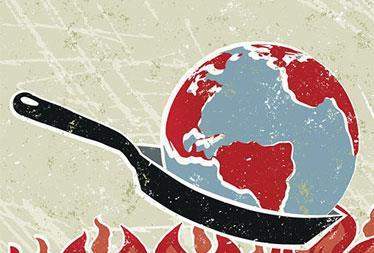Space weather could set society back 100 years, according to Lloyd's
Lloyd's has warned against the potential threat of space weather on businesses in a new report published today.
‘Space weather: its impact on Earth and implications for business’, published by Lloyd’s 360 Risk Insight and RAL Space, examines the threat for business as the weather in the space around earth nears its ‘solar maximum’ period - when its effects are likely to be most severe.
Mike Hapgood, report author and Head of the Space Environment Group at RAL Space, said: “Space weather is a serious risk that has long been overlooked and it’s time for businesses to know the wider impact it can have on them. This report outlines the many ways that these space weather disturbances can disrupt business activities and, most importantly, what businesses can do to reduce these risks."
In 2012, a new 11-year solar cycle will begin, bringing with it magnetic storms that could disrupt power supplies, transport and communications systems, causing widespread disorder around the world.
Trevor Maynard, manager, Lloyd’s emerging risks, said: “Space weather, like ordinary weather, varies considerably in its severity and can occur incrementally or as a one off. This isn’t a new phenomenon, space weather has always existed, but it is our growing dependence on electricity based technology that has exacerbated the threat and made us more at risk than ever. Awareness of the risk is a first step towards managing it.”
Space weather damage in one sector could have a domino effect on others, with a magnetic storm potentially wiping out a power grid for months, disrupting electricity and gas.
This could then directly affect transport, food refrigeration, clean water supply, communication systems, and could set society back at least 100 years, according to Lloyd's.
In 1989, the Quebec power grid shutdown in 90 seconds after a magnetic storm triggered a cascade of operational failures. It took nine hours to resolve the problem, leaving five million people without electricity during the Canadian winter, and costing an estimated C$2bn.
The report recommends that businesses need to be aware of the threat to their operations and plan accordingly and using advanced technologies they need to protect themselves by:
- having good access to specialist space weather services that are targeted on business’ needs;
- building protection into the systems at risk so they can withstand the extremes of space weather;
- thinking through global supply chain issues;
- adjusting the systems at risk in advance to reduce the space weather impact; and
- being ready to respond quickly to space weather problems, as they arise during the event.



































No comments yet